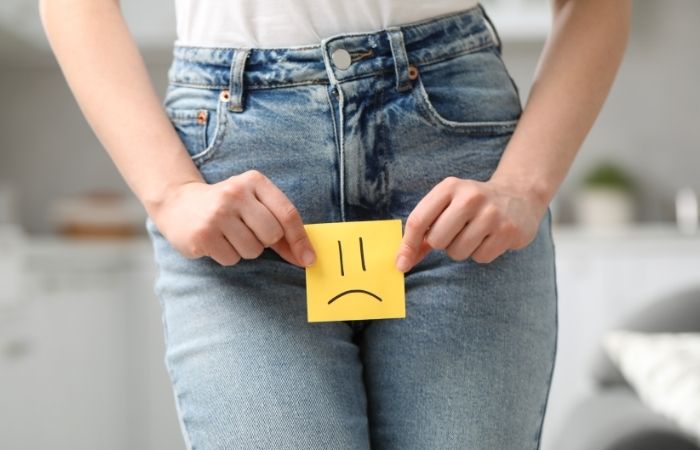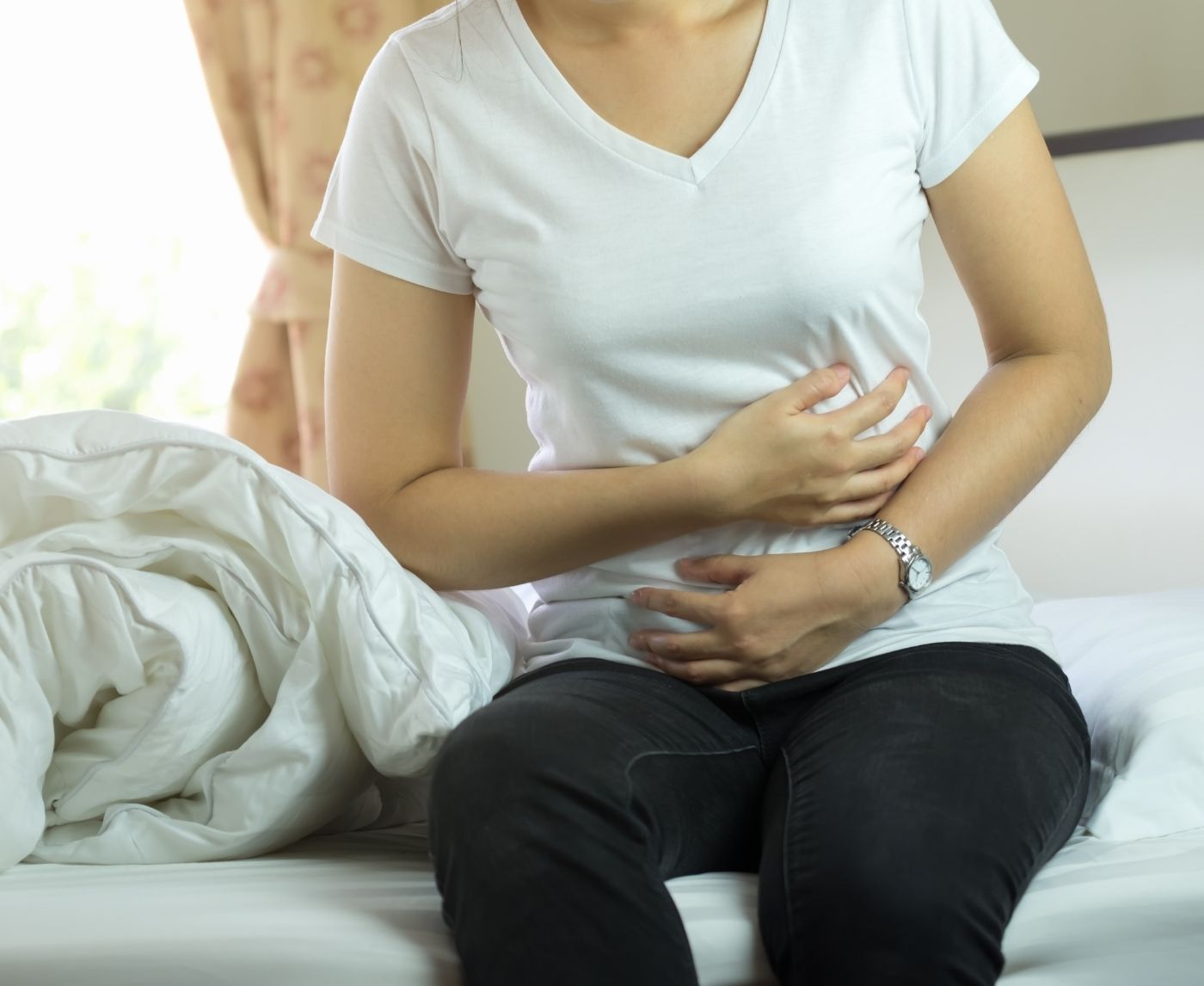Woke Up with Discharge from Your Penis? Here’s What Might Be Happening
It’s Not Just Cramps: When STDs Mimic Period Pain
You know the drill, bloating, pressure, that low tug in your belly that shows up a few days before your period. But what if those same sensations come mid-cycle? Or worse, right after sex? STDs like chlamydia and gonorrhea can cause inflammation in the uterus, cervix, and fallopian tubes, which can feel a lot like menstrual cramps or endometriosis.
The pain might come and go. It might feel dull, sharp, or like something heavy is sitting in your pelvis. And because it's internal, many people brush it off as “normal.” But if it keeps happening, especially after sex or with spotting, it's time to ask a new question: Could this be an infection you can’t see?

People are also looking for: Does mouthwash kill oral chlamydia?
When Sex Hurts, and It’s Not Just Emotional
Pain during or after sex is often dismissed as psychological, especially for women and AFAB individuals. But let’s be real, some STDs literally make sex hurt. Gonorrhea and chlamydia can inflame the cervix, making penetration painful. Herpes can cause internal sores or nerve pain that doesn’t always show up on the skin.
And if you've ever felt a deep ache in your belly after sex, especially partnered with unusual discharge, burning, or bleeding, that’s your body waving a red flag. Don't ignore it. Pain is never "just in your head", and it could be a sign of an untreated STD.
Pelvic Inflammatory Disease: The Painful Aftermath
One of the biggest silent threats from STDs is Pelvic Inflammatory Disease (PID). It happens when infections like chlamydia or gonorrhea spread upward from the cervix into the uterus, fallopian tubes, or ovaries. And yes, it hurts.
Symptoms of PID can range from a dull, crampy ache to sharp, stabbing pelvic pain. It might flare up during sex or urination. It can also cause fever, fatigue, and unusual vaginal discharge. Left untreated, PID can lead to infertility, ectopic pregnancy, or chronic pain. And here’s the twist: many people with PID don’t know they had the original STD until it’s too late.
STD Pain Isn’t Always Where You Expect It
Think your belly pain has to come with genital symptoms to be an STD? Think again. Some infections cause abdominal symptoms before they ever show up below the belt.
Hepatitis B and C, for example, are sexually transmissible viruses that affect the liver. In their early stages, they can cause abdominal pain, nausea, and fatigue, way before any liver numbers show up on a test. HIV can cause generalized belly discomfort during its acute stage. Even herpes, which most people associate with skin blisters, can cause deep nerve pain in the pelvic and abdominal region.
If your lower belly pain feels unexplained, persistent, or weirdly timed, it’s worth testing, especially if you've had unprotected sex recently.
Check Your STD Status in Minutes
Test at Home with Remedium3-in-1 STD Test Kit

 For Men & Women
For Men & Women Results in Minutes
Results in Minutes No Lab Needed
No Lab Needed Private & Discreet
Private & DiscreetOrder Now $69.00 $147.00
For all 3 tests
The “Invisible” Infections That Don’t Come With Discharge
We’ve been taught to look for the obvious: itching, burning, discharge. But here’s the hard truth, some STDs don’t follow that script.
Trichomoniasis, chlamydia, and even gonorrhea can sometimes present with nothing but vague pelvic pain. No itching. No odor. No telltale drip. That’s especially true for people assigned female at birth, whose reproductive tracts can harbor inflammation without clear signs.
If you’re feeling a deep pressure in your belly, a heavy ache, or persistent cramping that isn’t tied to your period, listen to your body. Pain without explanation is a signal. Don’t wait for the “right” symptoms to appear.
Abdominal Pain After Sex: When the Timing Is the Clue
Let’s talk timing. If you notice pain that hits right after sex, especially a dull, deep, or crampy sensation low in your belly, that's not random. Chlamydia, gonorrhea, and even herpes can trigger post-coital inflammation in the reproductive tract.
In some cases, pain after sex is the only early symptom people have before being diagnosed with PID. And it’s not limited to one gender. Men can also experience abdominal tension or pressure from infection-induced inflammation in the prostate or epididymis.
If your pain keeps showing up after intimacy, don’t just push through it. That’s your body asking you to check in, and possibly test.
When STDs and UTIs Blur Together
UTIs and STDs often get mistaken for each other. Both can cause pelvic pressure, pain when peeing, and lower belly discomfort. But they’re not the same, and treating one while missing the other can backfire.
Chlamydia and gonorrhea both infect the urethra and can mimic UTI symptoms. If your “UTI” keeps coming back or doesn’t respond to typical antibiotics, it might be time to consider STI testing.
Also important: having an untreated STD can make you more likely to develop a UTI. The irritation and inflammation lower your body's defenses. It's not either/or, it can be both. And knowing the full picture helps you treat it right.

People are also looking for: Will STD symptoms go away with UTI antibiotics?
The Gender Gap in Diagnosis and Pain Dismissal
Here’s where it gets real: women, trans folks, and AFAB individuals are more likely to have their pain ignored, dismissed, or misdiagnosed. And when that pain is tied to something as taboo as an STD, the silence gets even louder.
Many patients report going to the doctor multiple times with vague pelvic symptoms before anyone suggests STI testing. Why? Because providers often assume it's anxiety, menstruation, or just “normal female discomfort.” It’s not.
If you’ve been feeling something off in your gut, especially if it aligns with your sexual activity, advocate for yourself. Ask directly: “Could this be an STI?” And if that feels hard, start with an at-home test. You deserve answers without the gaslighting.
Early Testing Can Stop Long-Term Pain
STIs that cause abdominal pain tend to cause long-term damage if left untreated. PID can lead to scarring. Herpes-related nerve pain can recur for life. Hepatitis can progress to liver damage. HIV’s early symptoms might be your only chance to catch it before immune decline begins.
Testing gives you a window to fix what’s happening before it becomes irreversible. And the sooner you catch it, the simpler the treatment. Antibiotics for chlamydia and gonorrhea, antivirals for herpes or HIV, and even supportive care for hepatitis, the tools exist. But they only work when you use them early.
Not Just a Women’s Issue: Men Get Abdominal Pain Too
Pelvic pain isn't exclusive to people with ovaries. Men can, and do, experience abdominal and lower belly discomfort from STDs. Epididymitis (inflammation of the sperm-carrying tube) is a common complication from untreated chlamydia or gonorrhea. Prostatitis can cause lower abdominal and perineal pain, sometimes confused with GI issues.
In men, these pains are often shrugged off as “gym soreness” or “stomach bugs.” But repeated episodes or discomfort linked to urination, ejaculation, or sex should never be ignored. Male reproductive health deserves the same nuance and attention.
Check Your STD Status in Minutes
Test at Home with RemediumGenital & Oral Herpes Test Kit

 For Men & Women
For Men & Women Results in Minutes
Results in Minutes No Lab Needed
No Lab Needed Private & Discreet
Private & DiscreetOrder Now $75.00 $98.00
For all 2 tests
Common Misconceptions About Abdominal Pain and STDs
“If it were an STD, I’d have discharge or sores.”
Not always. Many STIs, especially in early stages, present only with vague symptoms like belly pain or pelvic pressure. Discharge isn’t guaranteed.
“Only women get STD-related pelvic pain.”
False. Men, trans men, and nonbinary people can experience abdominal discomfort from STIs due to epididymitis, prostatitis, or internal inflammation.
“It’s just my period, it always hurts like this.”
If the pain feels different than your usual cramps, lasts longer, or happens after sex, it’s worth investigating. Don’t ignore new patterns.
“It’s probably just a UTI.”
Maybe, but UTIs and STDs often overlap in symptoms. If it doesn’t go away with UTI treatment, or keeps coming back, get tested for STIs too.
FAQs
1. Can STDs cause abdominal pain without discharge?
Yes. Chlamydia, gonorrhea, PID, and even herpes can cause pelvic pain without any visible discharge.
2. What kind of STD causes lower belly pain?
Chlamydia and gonorrhea are the most common, often leading to PID in women. Hepatitis, HIV, and herpes can also cause internal pain.
3. How do I know if my abdominal pain is from an STD?
If it appears after sex, worsens during your cycle, or comes with unusual symptoms like spotting, it’s worth testing for STIs.
4. Does herpes cause stomach pain?
Herpes can cause internal nerve pain, especially during outbreaks. It may present as abdominal, pelvic, or even lower back discomfort.
5. Can men get pelvic pain from STDs?
Yes. Infections can cause epididymitis, prostatitis, or urethritis, leading to lower abdominal or groin pain in men.
6. Is it possible to have PID without knowing it?
Absolutely. PID can be silent at first, especially if it stems from an untreated chlamydia or gonorrhea infection.
7. Can I treat STD-related abdominal pain at home?
You can ease symptoms, but only antibiotics or antivirals can treat the cause. Get tested to know what you’re treating.
8. Will my STD-related pain go away on its own?
Some pain may fade temporarily, but the infection may still be active and causing damage. Always treat the root cause.
9. Can STD pain feel like gas or bloating?
Yes. Some people experience bloating or pressure sensations, which can be misattributed to digestion instead of infection.
10. Should I test even if I’m not sexually active right now?
If you’ve had unprotected sex in the past 6–12 months and have symptoms, testing is still important.
Don’t Ignore What Your Gut Is Telling You
Abdominal pain isn’t always about digestion or periods. Sometimes, it’s your reproductive system waving a white flag. STDs like chlamydia, gonorrhea, herpes, and even HIV can show up first as belly pain, quiet, sneaky, and easy to misread. But misreading it can cost you your health, your fertility, or your peace of mind.
You don’t need to panic. But you do need to listen. If your belly hurts in ways that don’t add up, especially after sex, around your cycle, or when UTIs keep coming back, get tested. Not later. Now. Your body is smart. When something feels off, trust it, and take the step that puts you back in control.
Sources
1. PID Testing Guidelines – CDC
2. STIs That Cause Abdominal Pain – Everlywell
3. Chancre (Syphilis Sore) – Wikipedia
4. Secondary Syphilis Masquerading as Insect Bite – PMC










